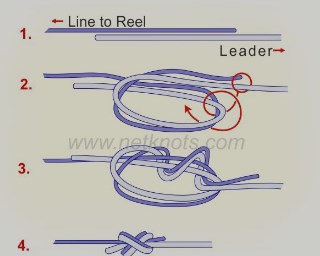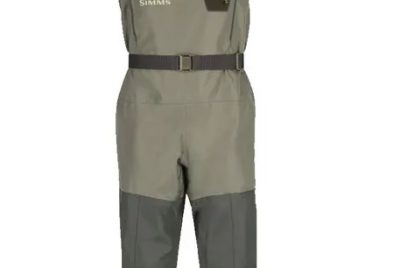Fly Fishing Net
As an enthusiastic fly fisher, I understand the significance of having the right tools for a successful and responsible fishing experience. Among these tools, a fly fishing net plays a crucial role in landing and safely releasing fish. In this comprehensive guide, I will share valuable insights, suggestions, and reasons for selecting and using the perfect fly fishing net.
Introduction
Fly fishing nets are indispensable tools that assist anglers in safely and effectively landing fish. They provide a secure environment for the fish while allowing anglers to handle and release them with care. Whether you’re a catch-and-release advocate or simply want to increase your landing success, a well-chosen fly fishing net is a valuable asset on the water.
The Benefits of Using a Fly Fishing Net
Using a fly fishing net offers a multitude of benefits for both the angler and the fish. Firstly, it significantly increases the chances of successfully landing a fish, reducing the risk of losing your prized catch. Secondly, a net minimizes stress on the fish by providing support and preventing iinjury, promoting ethical catch-and-release practices. By using a net, you contribute to the long-term health and sustainability of fish populations.
Factors to Consider When Choosing a Fly Fishing Net
When selecting a fly fishing net, several factors come into play. Consider the net material and construction, ensuring it is durable and resistant to damage. The net size should be appropriate for the fish species you’re targeting, allowing sufficient space for the fish without being excessively large. Additionally, evaluate the weight and portability of the net, as it should be comfortable to carry during your fishing adventures.
Selecting the Right Net Size for Different Fish Species
Different fish species require nets of varying sizes. A larger net is suitable for landing larger fish, ensuring they fit comfortably without the risk of escape or injury. Conversely, for smaller fish, a smaller net is more practical and easier to handle. Adapting your net size based on the target species will enhance your fishing experience and ensure the safe landing of your catch.
Understanding Mesh Types and Their Advantages
Mesh type is an essential consideration when choosing a fly fishing net. Rubberized mesh offers several advantages, including gentle handling of fish, reduced tangling of hooks, and easy removal of slime. Traditional nylon mesh, on the other hand, is more affordable and suitable for certain fishing scenarios. Exploring the benefits of each mesh type will help you make an informed decision.
Essential Features and Accessories for Fly Fishing Nets
To optimize your netting experience, consider essential features and accessories that enhance functionality and convenience. Non-slip handles and grips provide a secure grip, even in wet conditions. Magnetic or retractable net release systems ensure easy access to your net while keeping it securely attached when not in use. Net bags and storage options offer protection and allow for proper drying and ventilation.
Proper Techniques for Landing Fish with a Net
Landing a fish with a net requires skill and finesse. Approach the fish cautiously, positioning the net in a strategic manner. Use a controlled scooping or sliding motion to guide the fish into the net, taking care not to spook or harm the fish in the process. Avoid common mistakes such as excessive force or hurried movements, as they can result in lost fish.
Care and Maintenance of Fly Fishing Nets
Proper care and maintenance of your fly fishing net ensure its longevity and optimal performance. After each fishing trip, clean the net thoroughly, removing any debris or algae that may have accumulated. Inspect the net for signs of wear or damage, and repair or replace parts as needed. Storing the net in a cool and dry place will prevent degradation and extend its lifespan.
Fly Fishing Etiquette and Conservation Practices
Responsible angling involves handling fish in the net with care and consideration. Avoid lifting fish out of the water excessively or squeezing them tightly. Keep the fish submerged in the net while removing hooks or taking photographs. Adhering to catch-and-release guidelines and supporting conservation efforts will help preserve fish populations for future generations.
Customizing and Modifying Fly Fishing Nets
Fly fishing nets can be customized and modified to suit individual preferences and fishing styles. Adding extensions to the handle can provide increased reach for landing fish in difficult-to-reach areas. Personalizing nets with custom features, such as engraved handles or unique net bags, adds a touch of individuality to your angling gear.
Fly Fishing Net Reviews and Recommendations
To make an informed purchase, read reviews and recommendations from experienced anglers and experts. Explore popular fly fishing net brands and models to understand their features and performance. Consider factors such as durability, net size, and overall user experience when evaluating different options.
Tips for Beginners in Choosing and Using Fly Fishing Nets
For beginners, selecting the right fly fishing net may seem daunting. However, understanding the importance of a reliable net and its proper use will significantly impact your fishing success. Take the time to practice netting techniques, and don’t hesitate to seek advice from seasoned anglers who can share their knowledge and expertise.
Exploring Innovative Developments in Fly Fishing Nets
The world of fly fishing constantly evolves, and so does the technology behind fishing gear. Explore the latest advancements in net materials and designs that offer improved functionality and fish-friendly features. Stay updated on emerging trends to ensure you’re equipped with the most innovative and efficient fly fishing net.
Fly Fishing Net Safety Considerations
As with any fishing gear, safety is of utmost importance when using a fly fishing net. Exercise caution while handling the net, especially when landing larger fish that may be more energetic. Be mindful of your surroundings and the positioning of others nearby to avoid accidents and ensure a safe and enjoyable fishing experience for everyone.
Conclusion
A fly fishing net is more than just a tool; it is an essential companion on your angling adventures. By selecting the right net, mastering proper netting techniques, and embracing responsible fishing practices, you enhance your fishing success while safeguarding fish populations for the future.
Remember, a well-chosen fly fishing net can make all the difference in landing your prized catch with confidence.
FAQs
1.How do I clean my fly fishing net?
Cleaning your fly fishing net is simple. Rinse it thoroughly with freshwater after each fishing trip, removing any debris or algae. If needed, use a mild detergent and a soft brush to scrub away stubborn stains. Allow the net to dry completely before storing it.
2.Can I use the same net for different fish species?
While it is possible to use the same net for different fish species, it is recommended to select a net size suitable for the species you target most frequently. Using a net that is too large for small fish may lead to tangling, while using a net that is too small for larger fish may result in escape or injury.
3.What’s the ideal net size for trout fishing?
For trout fishing, a net with a hoop size of around 18 to 20 inches is commonly recommended. This size provides sufficient space to land medium to large-sized trout without being overly cumbersome to handle.
4.Can I modify my existing net for fly fishing?
Depending on the design of your existing net, certain modifications may be possible. Adding an extension to the handle or changing the net bag material are some examples of modifications that can enhance your netting experience.
5.Are there any regulations regarding the use of fly fishing nets?
Fishing regulations may vary by location and fish species. Some areas may have specific regulations on net mesh size and materials to minimize potential harm to fish. Always check local fishing regulations to ensure compliance and responsible angling.




